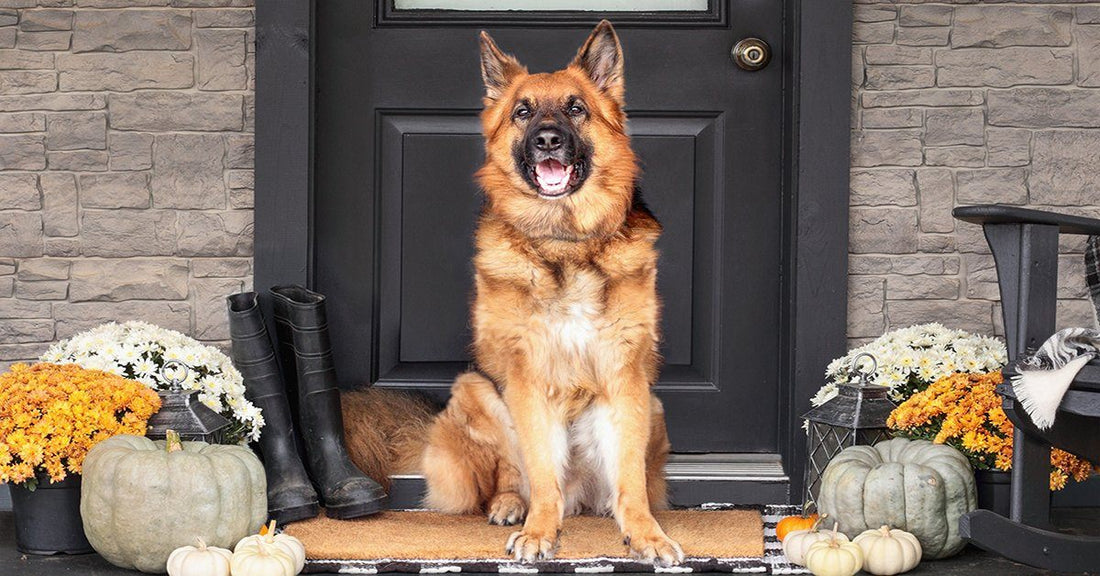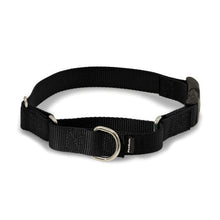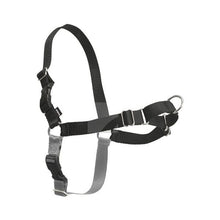5 Things To Do To Keep Your Dog Calm Around Visitors

When the doorbell rings, the last thing you want is an unruly or overexcited dog greeting your guests. Whether the excitement is out of enthusiasm because friends have come to visit, or because they are being protective, it’s important to teach your dog how you want them to behave when company arrives.
The goal of teaching your dog how to greet visitors is to protect your guests, yourself and your dog. Preferably, they should learn not to dart out the door, jump on the door or people. They should also know how to sit, stay, and place when asked. All dogs should learn that when they are calm, they can then happily greet their friends that come to visit.
Training dogs how you want them to behave should start when they are puppies. From the time you bring them home, their training and socialization should begin. When they are as young as 8 weeks old, puppies are capable of learning commands such as sit, down, and stay.
Young puppies respond very well to praise and positive reinforcement yet have short attention spans. Short sessions of lure training using treats, gentle touching, and lots of praise are ideal for training and bonding with puppies.
Puppy training takes about 15 minutes a day and also should be reinforced throughout the day as opportunities present. The training should be upbeat and fun. Practicing training in different locations of the house, yard, and on walks will help the pup to feel comfortable and relaxed when asked to learn new things.
This type of training is also the foundation for building good indoor manners, such as learning how to be calm around visitors. Puppies that have no structure, impulse control, and are not trained to focus on their owners can get over excited easily, which makes it hard to capture their attention so they can focus.
As they mature into dogs, over excited behavior around visitors is no longer cute and can become overwhelming. Sadly, some dogs with no training end up spending time alone or in shelters for no other reason than lack of foundational training. The good news is, even mature dogs can learn. It just takes longer to break bad habits than to teach them the good ones when they are young.
The following are some tips to help keep your dog calm around visitors. The tips should not be too challenging for dogs with some training. If not, you may have to take a step back and start some basic training or reinforce what your dog has already learned.
1. Teach your dog to sit at the door when company comes over
One of the best ways to keep excitement from escalating is to teach your dog to sit at the door when someone comes knocking. The command helps to take the focus from the person at the door back onto you. In a sit, it is impossible to jump on or run around guests.
You can practice this command by having a family member knock on the door then eventually recruit a friend to help you. Teach the dog to hold the sit until released by you. Praise and treats should come from you only because that is where their focus needs to be.
2. Teach your dog to place when guests arrive
Teaching your dog to go to a place in the house is a great way to stop over exuberant behavior in its tracks. It’s also a great command to help keep pets safe in a variety of situations, such as keeping them away from a spill or when someone is working in your home.
The place can be an area, dog bed, or even their crate. The idea is to have them go to their place until they are calmer and can greet visitors appropriately. This command is also useful if you have a guest over that is afraid of dogs. There is nothing wrong with crating a dog that is very over excited, protective, or around fearful children, etc. to help avoid a situation where excitement can become nervous energy for the sake of protecting your dog, yourself, and your guest.
3. Keep your dog leashed when friends visit
Another tool you can use to help keep your dog calm around visitors is to keep them leashed. This is very useful for dogs that have not learned the place command. The leash prevents them from running around the house, jumping on guests, and restrains them until their initial excitement is over.
Most dogs will eventually learn that when they are calm, the leash will come off and is ideal for puppies. It allows you to keep the dog close to you and your visitors so not only do they get to have fun and visit, they are socialized and learn good doggy manners at the same time.
4. Stay calm when company comes knocking
Before your guests arrive, let them know you’re teaching your dog how to be calm when company comes over. Ask them to use a calm voice, avoid super excited reunions with you, and to not greet your dog with an excited voice or physical movements.
Your dog will take a cue from you and your guests. Praise and treat your dog for staying calm and never allow your guests to give the dog a treat at the door. After the initial excitement wears off, your friends can then pet your dog, toss the ball outside, give the dog a treat with your permission, and enjoy their time with you without your dog going crazy in their enjoyment over seeing them.
5. If you need to, provide a treat as a distraction
You may want to remove balls or other toys that excite your dog when guests come over. Rather, substitute a high value, tasty distraction such as a treat puzzle or Kong filled with peanut butter.
The treat will help diffuse the excitement over the guest and give your dog something else to focus on. A puzzle provides mental stimulation, is calming, and will help keep your dog occupied. This is especially useful for younger dogs or teething puppies.
The treat will help keep your dog busy and entertained and also help them associate visitors being in the house with good things happening.
We hope these tips help your pup to learn how to greet visitors in a way that keeps everyone safe and happy. By teaching your dog how to stay calm when company comes to visit will increase everyone’s enjoyment and make you a proud pet parent. Don’t be surprised if your friends start asking you for tips to help calm their excited fur baby.
























